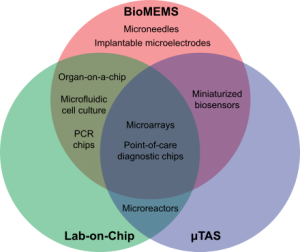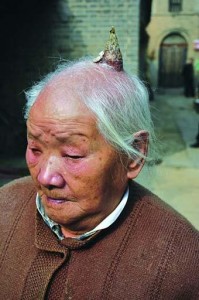Article first published online: 4 JAN 2010 DOI: 10.1002/jcp.22013 Copyright © 2009 Wiley-Liss, Inc.
Volume 223, Issue 1, pages 84–93, April 2010
Abstract
Common in vitro protocols for chondrogenesis of mesenchymal stem cells (MSCs) induce an inadequate, hypertrophic differentiation cascade reminiscent of endochondral bone formation. We aimed to modify chondrogenic protocols in order to identify potent inducers, promotors, and inhibitors to achieve better chondrogenesis. Nine factors suspected to stimulate or inhibit chondrogenesis were used for chondrogenic in vitro induction of MSC. Differentiation was assessed by immunohistochemistry, alcian-blue staining, qRT-PCR, and quantification of alkaline phosphatase (ALP) activity. Pre-differentiated pellets were transplanted subcutaneously into SCID mice to investigate stable cartilage formation. Transforming growth factor (TGF)-β was always required for chondrogenic differentiation and deposition of a collagen-type-II-positive extracellular matrix, while bone morphogenetic protein (BMP)-2, -4, -6, -7, aFGF, and IGF-I (10 ng/ml) were alone not sufficiently inductive. Each of these factors allowed differentiation in combination with TGF-β, however, without preventing collagen type X expression. bFGF or parathyroid hormone-like peptide (PTHrP) inhibited the TGF-β-responsive COL2A1 and COL10A1 expression and ALP induction when added from day 0 or 21. In line with a reversible ALP inhibition, in vivo calcification of pellets was not prevented. Late up-regulation of PTH1R mRNA suggests that early PTHrP effects may be mediated by a receptor-independent pathway. While TGF-β was a full inducer, bFGF and PTHrP were potent inhibitors for early and late chondrogenesis, seemed to induce a shift from matrix anabolism to catabolism, but did not selectively suppress COL10A1 expression. Within a developmental window of collagen type II+/collagen type X− cells, bFGF and PTHrP may allow inhibition of further differentiation toward hypertrophy to obtain stable chondrocytes for transplantation purposes.
My Interpretation:
You need TGF-beta to always be there in combination for the other growth factors to work. The others are BMP 2,4,6,7 aFGF, and IGF-1.
You want to avoid Collagen type X because collagen type X is produced by the chondrocytes after the chondrocytes have hypertrophied and by that time, it is already too late for them to proliferate which is what actually causes bone lengthening which is really just stacking of condrocytes in column fashion along the axis. Hypertrophy will always happen but proliferation will not. You want to focus on the layers closer and closer to the resting zone.
Also, you want to avoid matrix catabolism and desire matrix anabolism. The matrix they are referring to is the growth plate cartilage matrix, not the bone matrix. Catabolism is bad because that means it is going throughout process of breaking apart. You want to keep the growth plates intact strong, and multiplying.
It seems the bFGF and PTHrP inhibits early and late chondrogenesis which is a way to control hypertrophy. I am not sure if that means we should be striving to increase or decrease PTHrP.
{Tyler-I found the text file and have comments:
“Bone marrow samples for the isolation of MSC were obtained from 10 patients (range 34–73 years, 6 male/4 female) undergoing total hip replacement”
“Pellets of 4–5 × 105 MSCs were formed by centrifugation at 300g in 1.5 ml microcentrifuge tubes (Eppendorf, Hamburg, Germany). After incubation at 37°C, 6% CO2 for 4 days pellets were transferred to 96-well U-bottomed plates. Cells were kept in induction medium for 2, 4, 7, 14, 21, 28, or 42 days. Chondrogenic basal medium consisted of DMEM high glucose supplemented with 5 µg/ml insulin, 5 µg/ml transferrin, 5 ng/ml selenous acid, 0.1 µM dexamethasone, 0.17 mM ascorbic acid-2-phosphate, 1 mM sodium pyruvate, 0.35 mM proline, and 1.25 mg/ml BSA”
It seems that the default state for MSC pellet culture is to express type I collagen. And TGF-Beta is needed to induce expression of Col2 unless in the presence of bFGF or PTHrP. The other proteins tested were: BMP 2, 4, 6, 7. aFGF. bFGF. PTHrP. IGF-1. Now other non-protein factors are able to induce chondrogenic differentiation without growth factors like mechanical factors.
“0.1 ng/ml of PTHrP allowed differentiation according to positive staining for collagen type II and alcian blue, 1 ng/ml PTHrP suppressed chondrogenic differentiation in MSC from three of four of the donors”
“PTH1R mRNA appeared not before day 21 of chondrogenic culture with TGF-β. This argued in favor of a receptor-independent action of PTHrP in the early phase of chondrogenic induction.”<-So this means that supplemental means that elevate PTHrP could inhibit chondrogenesis as PTHrP can inhibit growth plate action regardless of the presence or absence of receptors.


